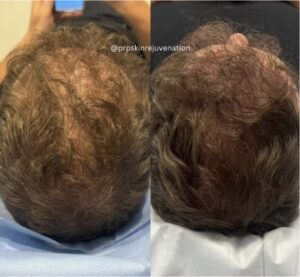What does the process involve
The process of using Platelet-Rich Plasma (PRP) for hair loss, including the centrifugation step and the targeting of dormant hair follicles, typically involves several key stages:
During the PRP procedure, a small amount of your blood is drawn from a vein in your arm, typically similar to a routine blood test.
The collected blood is placed in a specialised centrifuge machine. The centrifuge spins at high speeds to separate the blood into its various components based on density.
After centrifugation, the PRP, which is rich in platelets and growth factors is injected directly into the areas of the scalp with thinning hair or dormant hair follicles. The PRP solution is strategically distributed to stimulate hair follicles and encourage hair growth.
PRP therapy for hair loss has gained popularity for its potential to revitalise dormant hair follicles and improve hair density naturally. It's essential to consult with a qualified healthcare provider to determine the best approach and treatment plan for your specific needs.
BEFORE AND AFTER – 3 SESSIONS OF EMCYTE PRP
FOR MORE INFORMATION, AND TO BOOK A CONSULTATION – PLEASE HEAD TO OUR MAIN PAGE
